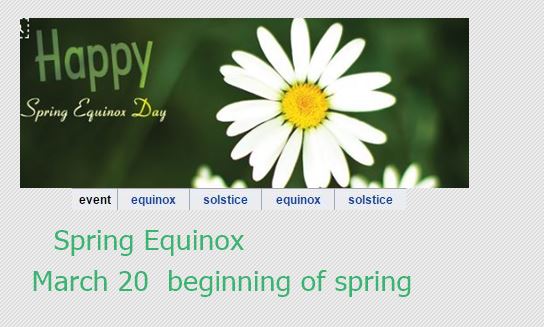The spring equinox
The spring equinox, also called the vernal equinox, is today. On the vernal equinox, the day is equally divided between hours of light and darkness, as not possible by defined like social status or religion so just ahead of the vernal equinox, which falls on March 20 this year.
Northern Meteorological Seasons
Spring - from March 1 to May 31;
Summer - from June 1 to August 31;
Fall (autumn) - from September 1 to November 30; and,
Winter - from December 1 to February 28 (February 29 in a leap year).
Summer - from June 1 to August 31;
Fall (autumn) - from September 1 to November 30; and,
Winter - from December 1 to February 28 (February 29 in a leap year).
Southern Hemisphere
Fall (autumn) - starts March 1 ends May 31
Winter - June 1 ends August 31
Spring - September ends November 30
Summer - December 1 ends February 28 (February 29 in a Leap Year)
Winter - June 1 ends August 31
Spring - September ends November 30
Summer - December 1 ends February 28 (February 29 in a Leap Year)
The equinox is the point at which the sun crosses the celestial equator from south to north.
Geometry. a surface generated by a straight line moving at a constant velocity.
Spring will officially arrive on Monday March 20 at 10:29 a.m. UTC. That’s Coordinated Universal Time, the clock that labs around the world like the U.S. Naval Observatory use. It replaced Greenwich Meridian Time (GMT), which is no longer used by scientists.
Authorities disagreed on whether GMT equates with UT0 or UT1, however the differences between the two are of the order of thousandths of a second. GMT is no longer used for scientific purposes.



Comments
Post a Comment